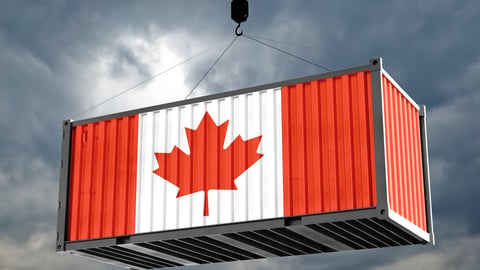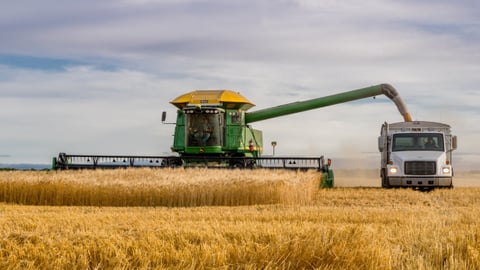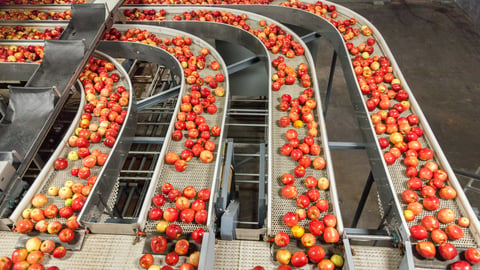Canada’s natural health products sector braces for U.S. tariffs while facing challenges at home
A trade war with the U.S. would inflict a heavy blow to the natural, organic and wellness (NOW) sector in Canada, given over 80% of its players—from supplement firms and brokers to distributors and grocers—are small or medium-sized businesses that struggle to absorb operating cost increases.
But Aaron Skelton, the president and CEO of the Canadian Health Food Association—which represents over 1,300 diverse members in the sector—says it doesn’t have to be a long-term hit. Even if a 25% tariff increase from the U.S. doesn’t come to fruition over the next four years of a second Trump term, preparing for the threat is in the best interest of the sector’s long-term health and prosperity.
“We’re having conversations about how to better support a homegrown manufacturing sector, which is long overdue in this country,” says Skelton, who joined the association in 2020 and was previously COO of GreenSpace Brands and spent almost 10 years in director merchandising roles in health and wellness at Loblaw Companies Ltd. “If there’s a silver lining, it’s that this could ultimately put the sector on stronger footing.”
Here, he discusses with Canadian Grocer the potential for Canada’s natural health products(NHP) sector to be more resilient and self-sufficient.
What is the current mindset in the industry?
That we’re a growing category at retail embraced by the vast majority of Canadians. Recent research that we commissioned shows over 82% of Canadian consumers rely on NHPs to help optimize and maintain their health and wellness. But the sector is dealing with two major issues—one being Health Canada’s forthcoming plain language labelling regulations, which makes it harder for high-quality, compliant, homegrown NHP producers to survive. And we have looming economic threats from our neighbour. Canada produces a lot of things, but not everything, especially ingredients in some NHPs. And so, a 25% tariff on top of overly burdensome regulatory costs pose a serious risk to an industry that most Canadians want to see thrive. It’s a tale of two emotions.
What are some key ingredients in NHPs that are sourced from the U.S.?
Many ingredients are not available in Canada and enter our country through U.S. intermediaries. Take Vitamin K2, for example—there's no manufacturer in North America, so all inventory flows through a U.S. broker. Korean Ginseng can be purchased directly from Korea, but tonnage is a challenge, so most buy it through a U.S. intermediary. Psyllium is another one. India production won’t sell psyllium at lower volumes, so 80% to 85% of the Canadian supply is from brokers in the U.S.
READ: FHCP’s Michael Graydon on tariffs and the path ahead for Canada’s food sector
In what other ways is Canada not competitive?
Before the tariff announcements, some Canadian businesses in the NOW sector moved their production to the U.S., primarily to take advantage of lower operating costs and reduced regulatory compliance expenses. At the same time, they could still access the Canadian market through the 90-day personal exemption, which allowed Canadian consumers to order products online and have them delivered to their Canadian address. This combination made U.S.-based production an attractive option even before trade tensions escalated.
What steps can the industry take to strengthen its own manufacturing capabilities?
It’s been reassuring to see the rallying cry for domestic businesses and products. Retailers small and large are supporting Canadian products, and it’s not category specific. I walked through a Metro a couple of hours ago and they changed all their digital signage to call out Canadian products. Consumers are looking for Canadian through and through. But we must do better for Canadian-owned producers and distributors. Yes, some things are out of our control, and we need to accept that, but it doesn’t mean our house is in order. This is a good time for reflection, ensuring we're fully leveraging the many advantages the country has to offer. We may be smaller than our southern friends, but we are still significant on the global stage—Canada was the world’s ninth-largest economy in 2024. It’s time to lean into our talent, the land and resources, as well as interprovincial trade, finding ways to support each other from retailer to manufacturer.
We’ve seen more political leaders, from Ontario Premier Doug Ford and Liberal leadership hopeful Mark Carney, talking about breaking down interprovincial trade barriers. How important is that move?
Hearing politicians talk about their shifts in position on interprovincial trade is a huge positive. Because trading between Canadian provinces is sometimes harder than with other countries. That's got to stop. It’s critical we get every major political party recognizing this issue.
READ: With tariffs on the horizon, Canada’s food sector urges long-term solutions
Where do things stand on the labeling issue?
We've heard acknowledgement about our concerns, but we haven’t seen any relief yet. And with the government being prorogued, there isn’t a lot of visibility. Labelling and proposed new fees under Health Canada’s cost-recovery program are still two very concerning ongoing challenges.





